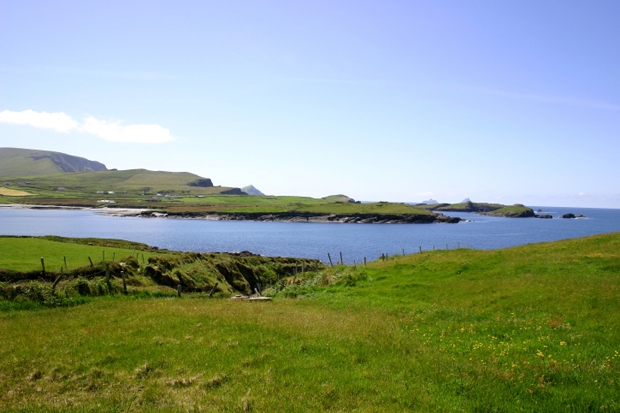‘The Anglo-Irish, their tribe, are dying. . . . They will go without a struggle, unlamented,’ Christopher Bland, 76, declares at the outset of his exciting, poignant and ultimately consoling debut novel. He refers particularly to the Protestant landed gentry, who achieved political and economic ascendancy in Ireland even before the Penal Laws disenfranchised and dispossessed the Catholic majority, until, in the 20th century, rebellion and civil war brought about independence, with incomplete national unity.
Everyone in Ireland of mixed English and Irish parentage, on every social level, is Anglo-Irish; however, Bland is most concerned with the history of the declining power and eventual more or less harmonious assimilation of the exalted ancient families that did not surrender their privileges without a bitter struggle and lamentation.
Bland’s own family was one of the few that once enjoyed dominant status in Ireland. Blands migrated from Yorkshire to County Kerry in the 17th century, and at one time possessed 25,576 acres there. Some of the proprietors were distinguished clerics in what became the Church of Ireland. Blands built Derriquin Castle, a Victorian extravagance overlooking the Kenmare River in south-west Kerry, which was burned in 1922, during the Troubles, and razed in 1969 to make way for a car park
Christopher Bland’s inherited Anglo-Irish identity was tilted towards Englishness by education at Oxford and a series of chairmanships (BBC, BT and the Royal Shakespeare Company), service whose public importance was honoured with a knighthood.
Even so, it should be remembered that he fenced for Oxford and was a member of the Irish Olympic fencing team. Lingering ambivalent loyalties have enabled him to write about Ireland’s passionate clannish rivalries with the balance of dual empathies, fortified by heroic sangfroid. In fluently readable, sturdy and elegant prose of almost superhuman fairness, he tells of Irish and British violence provoking violence, vengeance provoking vengeance: arson, ambushes, hostage-taking, beatings, murders and executions.








Comments
Join the debate for just £1 a month
Be part of the conversation with other Spectator readers by getting your first three months for £3.
UNLOCK ACCESS Just £1 a monthAlready a subscriber? Log in